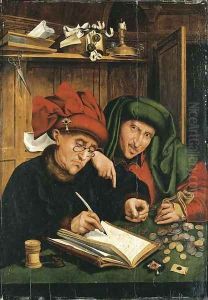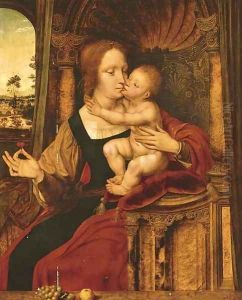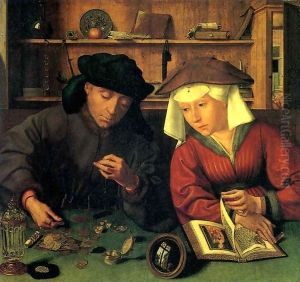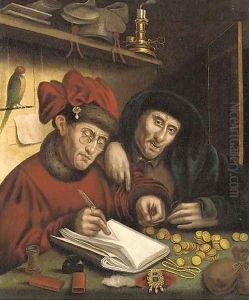Quinten Massy Paintings
Quentin Matsys (also spelled Massys, Metsys, or Messys; c. 1466 – 1530) was a painter in the Flemish tradition and a founder of the Antwerp school. He was born in Leuven (Louvain), which is now in Belgium, near the time of the transition from Early Netherlandish painting to the Renaissance period. While the exact date of his birth is not known, it is generally accepted that he was born around 1466.
Matsys is believed to have trained at the art guild in Leuven before moving to Antwerp in the early 1490s. There he married the daughter of a leading town painter, with whom he had two children. His work shows a detailed knowledge of local customs and domestic rituals, and he was among the first artists to focus on genre subjects, such as bankers, merchants, and lovers, using contemporary settings.
His early works, like the 'St. Jerome in His Study' (c. 1512), reflect a strong influence from the traditional Flemish style of artists like Dirk Bouts and Hans Memling. However, his later paintings, such as 'The Moneylender and His Wife' (1514) and 'The Ugly Duchess' (c. 1513), display a greater interest in human emotion, detailed characterization, and the use of a more vivid palette, which indicates the influence of the Italian Renaissance on his work.
Quentin Matsys is also well known for his religious panel paintings, and he contributed several altarpieces to churches across the Low Countries. His later works became more Italianate in style, likely influenced by his contact with Leonardo da Vinci’s work, which was known in the region. Matsys' 'The Entombment' (1508–11) is particularly noted for its emotional power and for the skillful handling of color.
He continued to be active in the Antwerp art community throughout his career, becoming a master in the Antwerp Guild of Saint Luke and taking on students who would continue his artistic legacy. Quentin Matsys died in Antwerp in 1530, leaving behind a body of work that significantly influenced the development of Northern Renaissance art. His sons, Jan and Cornelis Matsys, also became painters, although neither achieved the fame of their father.



